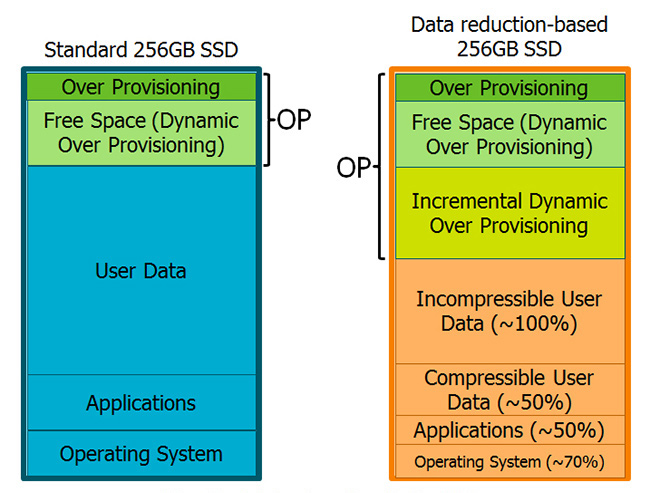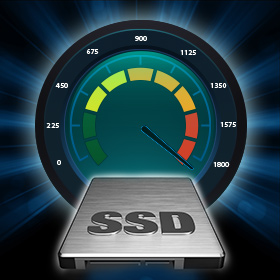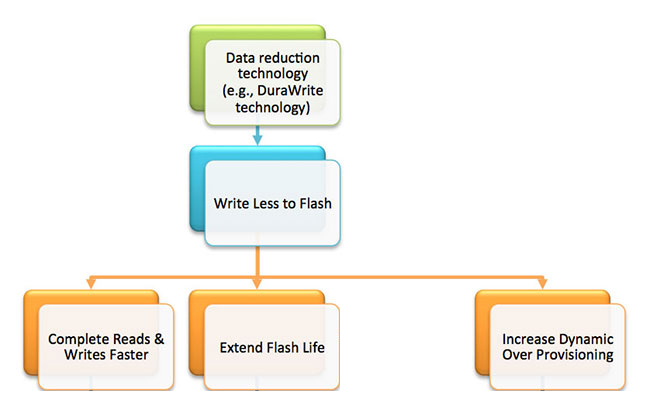Ever since SandForce introduced data reduction technology with the DuraWrite feature in 2009, some users have been confused about how it works and questioned whether it delivers the benefits we claim. Some even believe there are downsides to using DuraWrite with an SSD. In this blog, I will dispel those misconceptions.
Data reduction technology refresher
Four of my previous blogs cover the many advantages of using data reduction technology like DuraWrite:
In a nutshell, data reduction technology reduces the size of data written to the flash memory, but returns 100% of the original data when reading it back from the flash. This reduction in the required storage space helps accelerate reads and writes, extend the life of the flash and increase the dynamic over provisioning (OP).
What is incompressible data?
Data is incompressible when data reduction technology is unable to reduce the size of a dataset in which case the technology offers no benefit for the user. File types that are altogether or mostly incompressible include MPEG, JPEG, ZIP and encrypted files. However, data reduction technology is applied to an entire SSD, so the free space resulting from the smaller, compressed files increases OP for all file types, even incompressible files.
The images below help illustrate this process. The image on the left represents a standard SSD 256GB SSD filled to about 80% capacity with a typical operating system, applications and user data. The remaining 20% of free space is automatically used by the SSD as dynamic OP. The image on the right shows how the same data stored on a data reduction-capable SSD can nearly double the available OP for the SSD because the operating system, applications and half of the user data can be reduced in this example.
 Identical data on both SSDs.
Identical data on both SSDs.
Why is dynamic OP so important?
OP is the lifeblood of a flash memory-based SSD (nearly all of them available today). Without OP the SSD could not operate. Allocating more space for OP increases an SSDs performance and endurance, as well as reduces it power consumption. In the illustrations above, both SSDs are storing about 30% of user data as incompressible files like MPEG movies and JPG images. As I mentioned, data reduction technology cant compress those files, but the rest of the data can be reduced. The result is the SSD with data reduction delivers higher overall performance than the standard SSD even with incompressible data.
Misconception 1: Data reduction technology is a trick
Theres no trickery with data reduction technology. The process is simple: It reduces the size of data differently depending on the content, increasing SSD speed and endurance.
Misconception 2: Users with movie, picture, and audio files will not benefit from data reduction
As illustrated above, as long as an operating system and other applications are stored on the SSD, there will be at least some increase in dynamic OP and performance despite the incompressible files.
Misconception 3: Testing with all incompressible data delivers worst-case performance
Given that a typical SSD stores an operating system, programs and other data files, an SSD test that writes only incompressible data to the device would underestimate the performance of the SSD in user deployments.
Data reduction technology delivers
Data reduction technology, like SandForce DuraWrite technology, is often misunderstood to the point that users believe they would be better off without it. The truth is, with data reduction technology, nearly every user will see performance and endurance gains with their SSD regardless of how much incompressible data is stored.









Leave A Comment